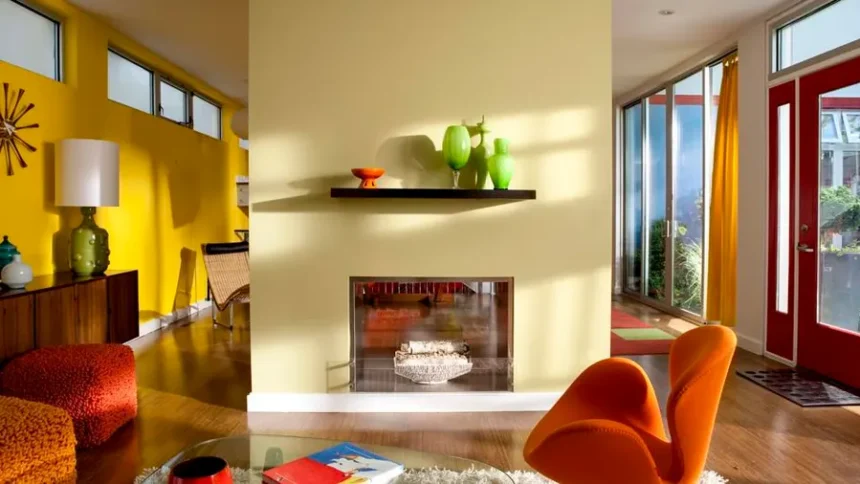When it comes to transforming a house into a home, the power of paint is undeniable. It’s the easiest and most impactful way to express your personality and set the mood in any room. The infinite spectrum of hues and finishes can be both exhilarating and overwhelming. To navigate the vast sea of options, one must become adept at selecting the perfect paint colour chart and finishes. This article will guide you through the fundamentals of colour theory, the psychology of colours, and practical tips for choosing the right shades to enhance your living space.
The Psychological Impact of Colour
Colour has the profound ability to evoke emotions and affect our mood. Warm hues like reds, oranges, and yellows can energise a room and stimulate conversations, making them excellent choices for living areas and kitchens. On the contrary, cool blues and greens tend to have a calming effect, fostering relaxation in bedrooms and bathrooms. However, it isn’t just about the colour itself; saturation and brightness also play crucial roles. Softer, pastel shades can create a gentle, inviting atmosphere, while bold, vibrant colours can make a powerful statement.
The Power of Neutrals
Neutral tones are often underestimated in their versatility and ability to set a foundational tone. White, beige, grey, and other earth tones work as excellent backdrops for any design element, providing ample opportunity for pops of colour through accessories and furnishings. They also lend the illusion of space and cleanliness, making them ideal for smaller rooms and high-traffic areas.
Understanding the Colour Chart
An invaluable tool for any home designer is the colour chart. It’s more than just a collection of pretty swatches; it’s a gateway to understanding how colours relate to each other. A comprehensive colour chart offers insights into complementary, analogous, and monochromatic colour schemes that can be employed to achieve balance and harmony in interior design. Aligning your colour choices with a well-organised colour chart ensures a professional and aesthetically pleasing outcome.
Textures and Finishes
While colour is crucial, the finish of the paint can dramatically affect the overall look and feel of a room. High-gloss finishes are durable and easy to clean, but they can highlight imperfections. Matte finishes, on the other hand, offer a more subtle, sophisticated look but might not stand up to moisture or grime as well. Satin or eggshell finishes strike a balance between the two, offering slight sheen and better durability than matte options.
Incorporating Unique Finishes
Aside from traditional paints, there are also unique finishes that can add character to your space. Chalkboard paint, for example, can turn a wall into a functional and fun surface to write reminders, menus, or let the kids unleash their creativity. It’s also a clever way to incorporate an interactive element into a room’s design.
Test Before Committing
Remember the cardinal rule of interior painting: test your colours before committing. Purchase samples of your chosen hues and paint a small section of the wall to observe how the colour changes in different light conditions. Colours can look drastically different from the paint chip once applied and exposed to natural and artificial light at various times of the day.
Navigating Trends vs Timelessness
While keeping up with the latest colour trends can be thrilling, it’s essential to consider longevity. Will you still appreciate that bold accent wall a few years from now? If you love experimenting with trends, consider doing so in ways that are easy to update, such as with cushions, throw blankets, or artwork.
Consulting the Professionals
When in doubt, seeking professional advice can provide clarity and direction. Interior designers and colour consultants can offer personalised recommendations based on your space, lighting, and décor preferences.
Exploring Specialists’ Offerings
Specialised paint suppliers often have tools to aid your decision-making. Some paint companies offer not just a standard paint colour chart but also tools to visualise how your selected colours will look in a virtual room. This can make the selection process more interactive and realistic.
The Journey Begins With a Single Swatch
Becoming the master of your home’s palette is an enriching process. It’s a journey that begins with the humble swatch of colour and extends into the realm of possibility that paint can offer. Embrace the chance to express your personality and reshape your environment with each stroke of the brush.
Conclusion
In conclusion, mastering the palette of home design starts with understanding the psychology of colours, knowing how to use a colour chart to your advantage, and having the courage to experiment with textures and finishes. Whether you opt for a classic neutral or a vibrant accent wall, the right paint selections can elevate your interiors from mere living spaces to personal sanctuaries of comfort and style.
Final Thoughts
Take the time to explore, imagine, and learn, and you’ll find that perfect shade that not only transforms your walls but also reflects the essence of your home. With the right knowledge and a keen eye for colour, you can make informed decisions that will enrich your living space for years to come.





